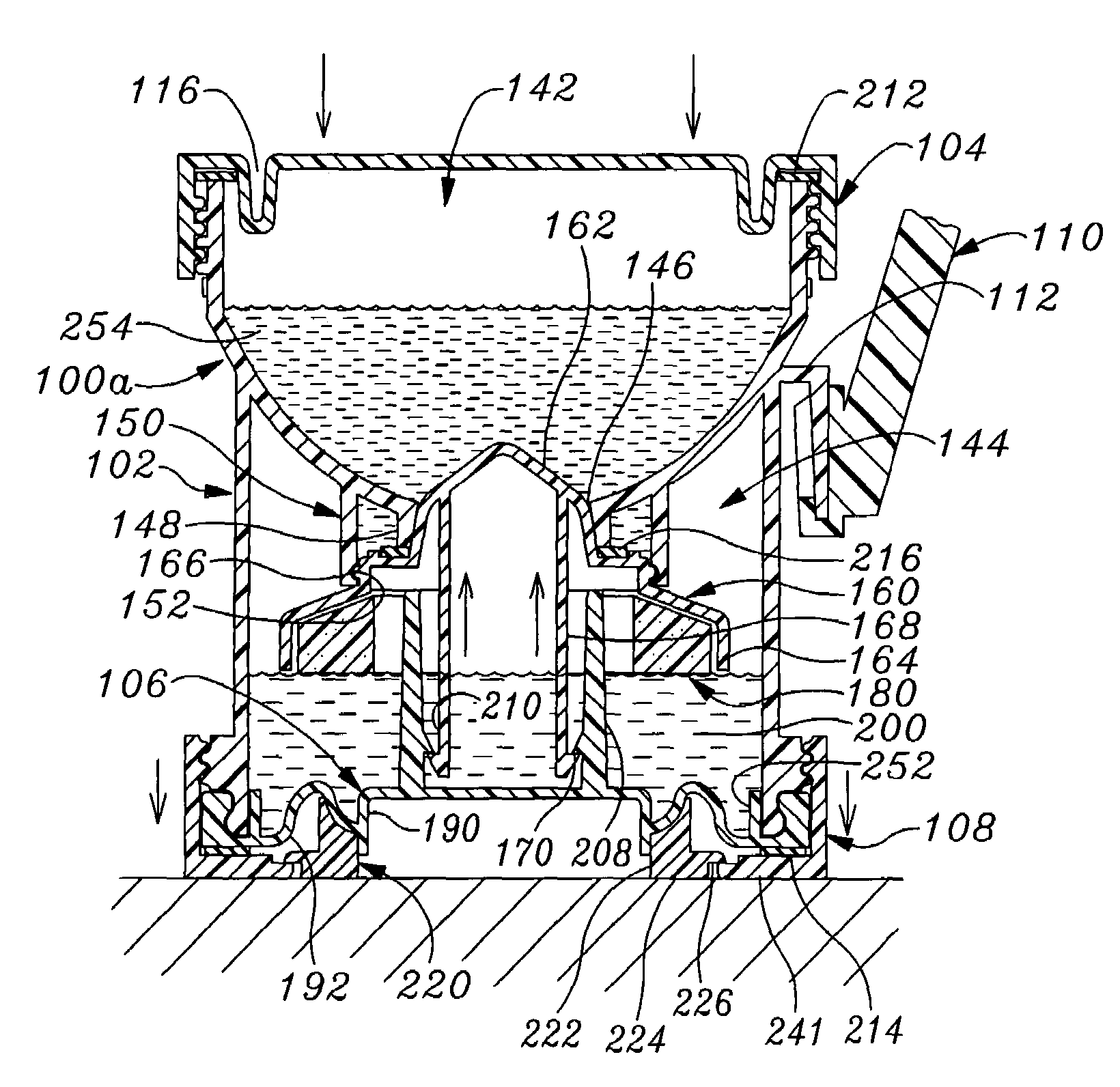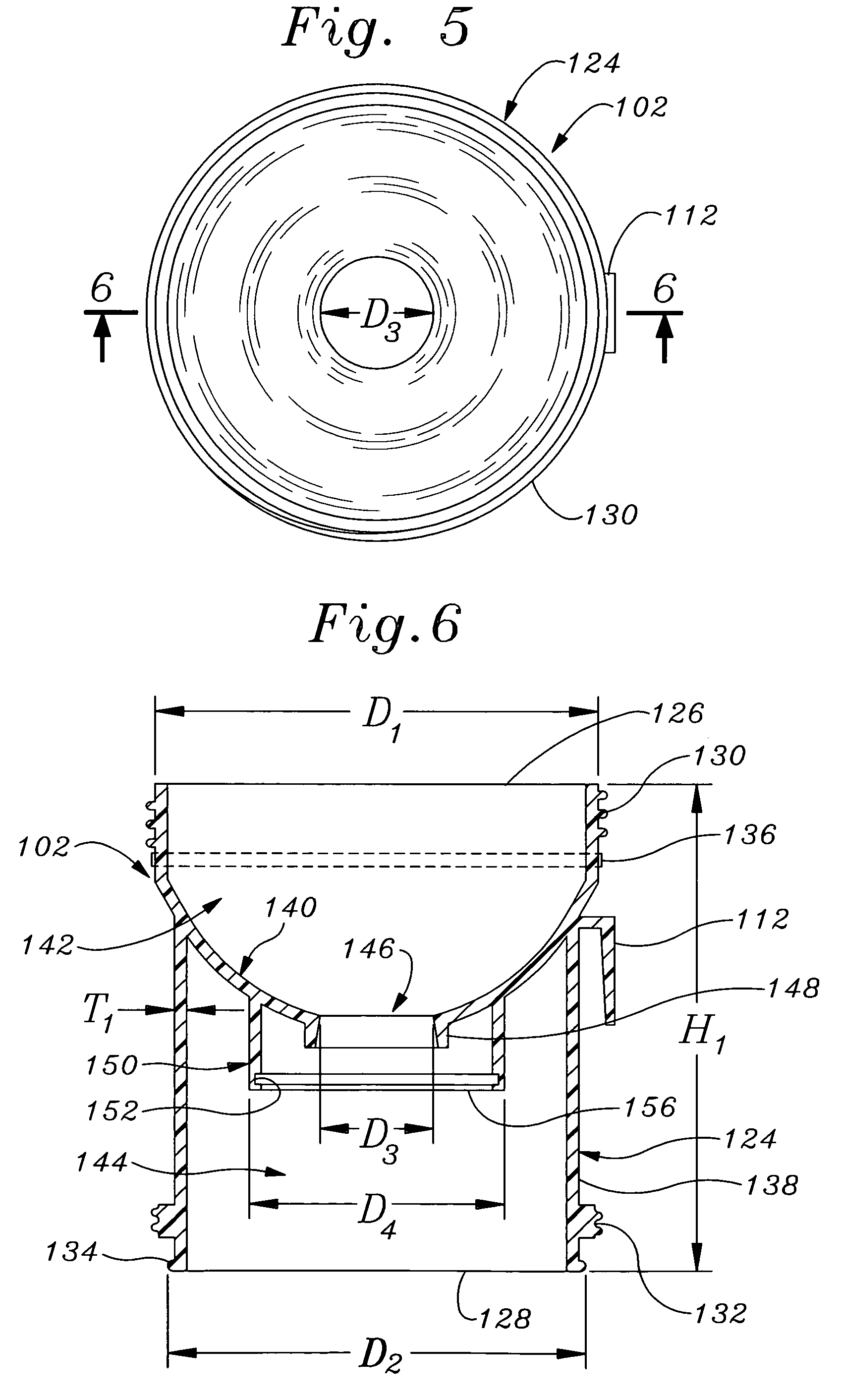Dual-chamber liquid receiving and containing device
a liquid receiving and containing device technology, applied in medical science, vaccination/ovulation diagnostics, packaging, etc., can solve the problems of contaminated and unsuitable urinalysis, high incidence of false positive diagnosis, and inability to strictly follow cleaning procedures, so as to ensure the over-center locking of the web and the device body footprin
- Summary
- Abstract
- Description
- Claims
- Application Information
AI Technical Summary
Benefits of technology
Problems solved by technology
Method used
Image
Examples
Embodiment Construction
[0089]There is shown in FIG. 1 a dual-chamber, liquid receiving and containing device 100 (hereinafter, for the sake of brevity, usually referred to as the “dual-chamber device”) which may advantageously be used to receive a flow of urine from a patient and contain the urine flow as separate fore-stream and mid-stream flow portions, as described below.
[0090]Shown comprising dual-chamber device 100, as more particularly described below, are a generally cylindrical device body or liquid cup 102, a top cover or cap 104 that is detachably attached at an open upper end of the body, a bottom cover or cap 106 that is attached to an open bottom of the body, a bottom cover locking ring 108 that is threaded onto the body to secure the bottom cover to the body (as discussed below), and an angled handle 110 that is detachably attached to the body by a tapered fitting 112 projecting from upper regions of the body.
[0091]Top cover 104 is shown in FIG. 2 as having an annular device sealing recess o...
PUM
 Login to View More
Login to View More Abstract
Description
Claims
Application Information
 Login to View More
Login to View More - R&D
- Intellectual Property
- Life Sciences
- Materials
- Tech Scout
- Unparalleled Data Quality
- Higher Quality Content
- 60% Fewer Hallucinations
Browse by: Latest US Patents, China's latest patents, Technical Efficacy Thesaurus, Application Domain, Technology Topic, Popular Technical Reports.
© 2025 PatSnap. All rights reserved.Legal|Privacy policy|Modern Slavery Act Transparency Statement|Sitemap|About US| Contact US: help@patsnap.com



